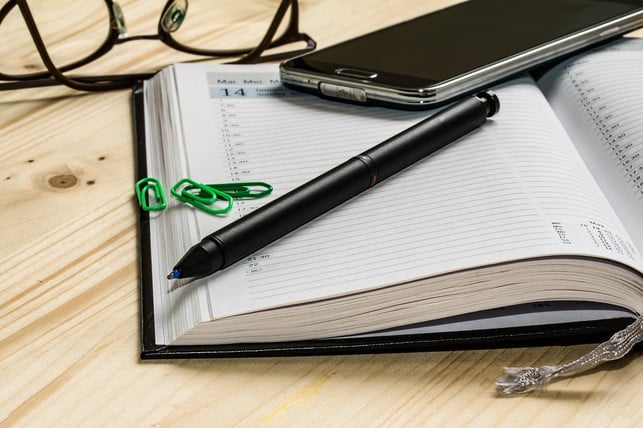
A nap gives your body new energy and improves your performance. Here you can find out why a nap is so healthy and how you can integrate it into your daily routine.
The ever-dreaded midday slump is a completely normal part of the biorhythm. We often experience a drop in performance between 1 p.m. and 3 p.m. Blood pressure drops, we feel tired and unfocused. A so-called power nap should then get us back on track.
However, in our society it is frowned upon to drop your head on the office table around midday. A nap is reserved for smaller children and older people. You can read why you should give your body a break and how best to do it in this article.
Nap: That’s why you need a break at lunchtime

According to Harvard Medical School, your body has a biological clock that influences various processes. For example, it controls:
- the body temperature
- the blood pressure
- the production of digestive juices
Your internal clock follows the so-called circadian rhythm with regard to needs such as appetite and sleep. On this basis, it regulates not only the physiological processes, but also your well-being. This is why you are awake in the morning and tired in the evening.
However, the circadian rhythm of the internal clock can shift due to external influences. If you expend a lot of energy in the first half of the day, you may experience a midday slump later. Your blood pressure drops and your circulation isn’t quite up to speed. These lows often come after eating, but are not necessarily triggered by it, just intensified. Among other things, blood sugar levels can drop after eating and the perceived tiredness can increase.
Even if social expectations may dictate otherwise, your biorhythm has no problem taking a power nap during the day. The body demands a break to reduce stress and recover for the second half of the day.
If you fight the depression with all your might, you will only increase the physical stress even more. By the way, a lack of concentration or extreme fatigue not only makes you less effective. These factors can also be favored:
- your mood drops
- you are more irritable
-
Depressive moods can occur
- you are prone to mistakes
- The risk of accidents due to carelessness increases
These are the benefits of an afternoon nap

Afternoon naps are good and healthy. You will benefit most if you close your eyes for no more than half an hour during the day at least three times a week. By the way, it’s less about sleeping deeply than it is about relaxing well. Even just a few minutes are enough to make you feel better.
This is what happens when you sleep:
- the body regenerates itself
- damaged cells are repaired
- the immune system gets going again
- Inflammatory processes in the body are healed
- The risk of cardiovascular diseases decreases, as a study by the Harvard Medical School was able to show
- Stress is reduced
- Recorded information can be processed and stored better
After a nap you feel fitter and more productive. You are able to react faster, solve problems better and work more creatively. It also improves your memory and learning ability. So you should take a break at university during exam periods and use it for an afternoon nap. You can find tips for better learning here: Learning methods: Helpful tips for effective learning
In addition, in Mediterranean countries where regular siesta times are observed, studies have shown that the population suffers less frequently from cardiovascular disease, morbid obesity or strokes.
“At the same time, studies of people in the USA have shown that exactly these factors improved when they had previously not taken a nap during the day but then started taking them,” says Simone Koch, doctor, hormone expert and biohacker. Her specialty is, among other things, researching how natural processes in the body can be optimized through healthier behavior.
By the way: Do you constantly feel exhausted, tired and can’t sleep properly at night? Then it is advisable to seek medical help. As Harvard Medical School knows, the body reacts to various ailments and illnesses with massive fatigue. These include diabetes, depression, Parkinson’s or chronic pain.
Tips for a restful afternoon nap

To integrate a midday power nap into your everyday life and get the most out of it, you can follow these tips. This is how your afternoon nap becomes really effective:
-
Keep it short! For a restful afternoon nap, you shouldn’t plan on taking longer than 20 minutes. Ideally, you can close your eyes after lunch between 1 and 2 p.m., advises Markus Specht, head of the center for interdisciplinary sleep medicine at the DKD Helios Clinic in Wiesbaden. “Then our body is at its natural low and slides more easily into relaxation mode.” If sleep lasts longer, your body enters the deep sleep phase. Afterwards, it will be much more difficult for you to get going again. That’s why Markus Specht recommends setting an alarm clock.
-
Listen to your body. If you get up and go to bed at similar times every day, your midday slump will always come at the same time. Don’t plan any appointments during this time so that you can give your body a break.
-
Provide a good environment. It’s one thing to not be available for appointments or email requests for 30 minutes. But also make sure that no calls disturb you during this time. Put your phone on silent and turn off your cell phone. You can also activate call forwarding for a few minutes after consulting with your colleagues.
-
Get some rest. Ideally, you can lie down and close your eyes for a while. Of course, this isn’t so easy in the office. So sit comfortably in your desk chair, put your legs up and let your arms rest on the armrests. Close your eyes and take deep breaths to relax.
-
Get involved with it. Of course, it can be difficult to switch off. Soft relaxing music can help you relax more quickly. You shouldn’t put yourself under pressure either. Taking just a five-minute break can help you feel fresher and more productive again.
-
Wake up properly. To reactivate your body after a nap, you should stretch well afterwards. It also helps to drink a glass of water. If you can, go outside for five minutes and take a walk to get your circulation going again.
Tip for particularly tired people:
If you can’t really wake up, try the combination of caffeine and a power nap! Drink coffee or another caffeinated drink before your nap and then lie down. It takes a while for the caffeine to work in the body. When you get up again after 20 minutes, you will feel the restorative effects of the afternoon nap and the activating effects of the caffeine. This method is also known as coffee napping.
More tired after a nap than before
If the power nap has turned into a longer nap and the body has already entered the deep sleep phase, it can happen that we feel completely exhausted when we wake up. “The brain would actually be ready to sleep for another six hours. If we are then woken up brutally, we feel literally destroyed,” says sleep doctor Specht.
Due to the long afternoon nap, it can also happen that we only wake up again in the evening and therefore find it difficult to rest at night.
“People with very low blood pressure often take a long time to get back on track. And for them, even a nap is often not that cheap,” adds Simone Koch.
In fact, not everyone is made for afternoon naps. If you feel dizzy instead of reborn afterwards, it’s better to avoid it.
Can naps be counterproductive?
Anyone who regularly falls asleep during the day disrupts their natural sleep-wake rhythm. Because if the sleep pressure that builds up over the course of the day is given in too early in the day, it will simply be far too low in the evening to be able to fall asleep well.
Not being able to fall asleep is pure stress for your body and mind. This can lead to a vicious circle and ultimately to a serious sleep disorder, which then needs to be treated professionally.
In addition to babies, an exception are sick and older people, says Markus Specht: “Because in old age you produce less melatonin at night and the night’s sleep is therefore reduced anyway, an additional nap during the day can be very restful.”
Can I compensate for a sleepless night with an afternoon nap?
Whether it’s due to a wild party, heartache or brooding: if you barely slept a wink the night before, you’d better hold on until the next evening. Just like it is recommended for jet lag.
A power nap can work wonders here too, says Specht. But if you indulge in sleep during the day, you risk falling into the trap already mentioned, which means lying wide awake in bed in the evening.
Immediate and long-term effects of napping
A successful nap has a noticeable immediate effect, says biohacker Simone Koch. “As soon as we get up, we can remember things better, are more concentrated and more receptive.” If you practice it as a lifelong ritual, you will benefit from it well into old age.
There is evidence that regular naps can help prevent the onset of age-related illnesses and frailty much later. Specht notes: “I am personally convinced that power naps not only make us physically and mentally more productive, but also strengthen our mental health in the long term.”
So if you lie down regularly at lunchtime, you can not only feel more awake afterwards, but also less stressed and face challenges in everyday life more calmly. By the way: Every nap counts – even if for most people it is only possible on the weekend.
With material from dpa.
Revised by Philipp Multhaupt
Read more on Techzle\.com:
- Fall asleep better: These 6 tips can help
- Spring fatigue: 6 simple tips for more energy in spring
- Ergonomics in the workplace: How to sit healthier in the office
** marked with ** or orange underlined Links to sources of supply are partly partner links: If you buy here, you are actively supporting Techzle\.com, because we then receive a small part of the sales proceeds. More info.